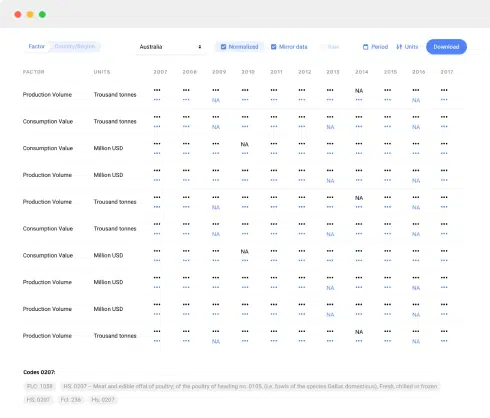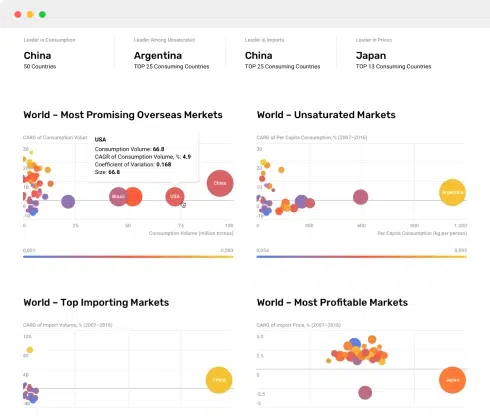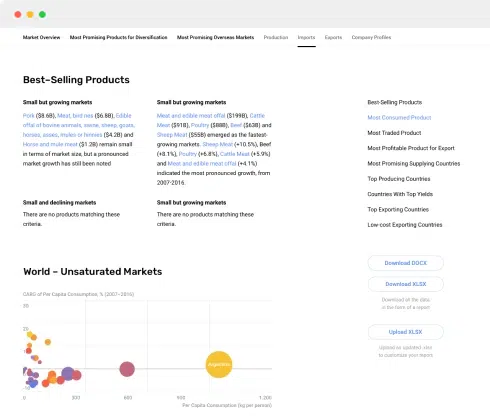
Dell Dominates as Star Brand with 4.43 Rating and 190K Reviews, Samsung Leads Premium High-Volume Sales at $387
In the dynamic monitor market, characterized by rapid e-commerce growth and shifting consumer preferences post-pandemic, understanding brand positioning is critical for strategic decision-making. Macroeconomic factors such as inflation and supply chain constraints have further intensified competition, making data-driven insights indispensable. This analysis leverages marketplace data to decode the competitive landscape, offering actionable intelligence for marketing, pricing, and assortment strategies. The geographic focus on ZIP code 60007 provides a nuanced view of local availability and logistics, which can significantly influence product visibility and delivery promises, a key factor in consumer purchase decisions.
Methodology
This analysis is based on data aggregated from the Amazon marketplace in the United States, with a specific delivery location of ZIP code 60007. The dataset was collected by monitoring the product category using relevant search keywords. All data visualization and aggregation were performed using IndexBox analytics tools. The complete brand performance data can be explored further on the IndexBox platform at https://app.indexbox.io/brands/852849h852859/840.
Rating vs Reviews: Identifying Brand Health Quadrants
The scatter plot reveals four distinct brand clusters. Dell stands alone in the coveted High Rating / High Reviews quadrant (Star), boasting a robust 4.43 rating supported by 190K reviews, indicating strong customer satisfaction and widespread market acceptance. The High Rating / Low Reviews quadrant (Niche) includes Lenovo, AOC, HP, and Sceptre; these brands enjoy excellent product perception but have yet to achieve mass-market review volume, suggesting targeted but limited appeal. The Low Rating / High Reviews segment (Rising) features ASUS, Samsung, Radeon, and Eyoyo; their high review counts demonstrate strong market presence and sales volume, but their slightly lower ratings (e.g., Samsung at 4.36) point to potential quality or expectation mismatches that need addressing. SideTrak resides in the Low Rating / Low Reviews quadrant (Problematic), signaling a lack of both market traction and customer satisfaction.
For Star brands like Dell, the strategy should focus on maintaining quality and leveraging social proof in marketing. Niche players like Lenovo and Sceptre must invest in awareness campaigns and sampling to convert their high satisfaction into more reviews and market share. Rising brands, particularly Samsung and ASUS, need to analyze negative feedback rigorously to improve product quality and customer service, thereby converting their high visibility into higher ratings. Problematic brands require a fundamental reassessment of their product-market fit. Over time, monitoring movement between these quadrants is crucial; a Rising brand that improves its rating becomes a dominant force, while a Star brand that falters can quickly lose its position.
Price vs Sales Volume: Decoding Market Elasticity
The analysis of price against sales volume uncovers clear strategic groupings. Samsung exemplifies a successful High Price / High Volume strategy, commanding a premium average price of $387 while generating the highest sales volume (715 units), indicating strong brand equity and inelastic demand for its products. ASUS and AOC also operate in this space, though with lower volume. Conversely, Dell and Lenovo dominate the Low Price / High Volume quadrant, with Dell achieving massive volume (391 units) at a competitive $273 average price, a classic volume-driven strategy. The Low Price / Low Volume cluster, containing Radeon, CRUA, and ARZOPA, represents brands struggling to gain traction despite low prices, suggesting poor brand recognition or value proposition. Finally, Alienware and JSAUX occupy the High Price / Low Volume niche, catering to a specialized, price-insensitive audience with minimal volume but likely high margins.
The data suggests demand is highly elastic for low-cost brands but more inelastic for established premium brands like Samsung. To optimize, volume leaders like Dell should cautiously test minor price increases to improve margin without sacrificing volume, while niche premium brands like Alienware should focus on exclusivity and feature innovation rather than price competition. A key risk is assortment cannibalization; brands like ASUS with a wide range of offers must ensure product differentiation is clear to avoid self-competition. The optimal number of offers is context-dependent; Samsung shows that a focused, premium assortment can yield high volume, whereas a broader portfolio may be necessary in the competitive mid-range.
Price Distribution: Identifying the Market's Sweet Spot
The price distribution histogram with Kernel Density Estimation (KDE) shows a highly right-skewed distribution, confirming the monitor market is highly competitive at lower price points. The vast majority of offers are concentrated below the $500 mark, with a pronounced peak in the $100-$185 range. This represents the high-volume "sweet spot" where consumer demand is most concentrated. A second, smaller peak appears near the $300-$350 range, likely representing the premium mainstream segment featuring higher refresh rates or superior panels. The long tail of the distribution, extending beyond $1000, consists of specialized professional and gaming monitors.
For mass-market brands, focusing assortment and marketing efforts on the $100-$350 range is critical for capturing volume. Brands should test price increases within this band in small increments (e.g., ±5%) to find the optimal balance between margin and conversion rate. The anomalies in the high-end tail warrant investigation; while some are legitimate premium products, extremely high prices with low reviews could indicate grey market imports or counterfeits, requiring vigilance from marketplace operators and brands alike. Assortment segmentation should clearly distinguish between value-oriented models in the sweet spot, feature-rich models in the mid-premium range, and specialized high-end products to avoid confusing consumers and diluting brand positioning.
Market Share by Volume: Leadership and Portfolio Strategy
Sceptre leads the market in sales volume with a 34.7% share, a remarkable position that is likely driven by an aggressive low-price strategy. However, its position in the Rating vs Reviews analysis suggests this volume may not be supported by strongest customer satisfaction. Samsung (21.5%) and Dell (15.7%) follow, with both volume and strong brand health, making them more sustainable leaders. The long tail of the market is significant, with the "Others" category holding a nearly 3% share; breaking down this segment would likely reveal emerging challengers and niche players that could disrupt the established order.
For a volume leader like Sceptre, the strategic imperative is to fortify its position by investing in product quality to improve ratings and build long-term brand loyalty, thus protecting against competitors who might compete on both price and quality. Samsung and Dell should continue to leverage their strong brand health to expand into adjacent product categories or consumer segments. All major players should analyze the "Others" segment to identify acquisition targets or innovative product features being pioneered by smaller brands. Portfolio diversification is also key; leaders must have offerings across key price bands to defend against attacks from both value and premium competitors.
Price Distribution by Brand: Analyzing Assortment Width
The boxplot visualization reveals significant differences in the pricing strategies and assortment width of the top brands. Samsung and ASUS exhibit the widest price ranges, indicating broad portfolios that cater to both budget-conscious and high-end consumers. Their median prices are also the highest among the group, confirming their focus on the premium segment. Dell shows a concentrated interquartile range around $200, consistent with its volume-driven strategy in the mid-market. In contrast, AOC and Radeon have notably lower median prices and narrower ranges, focusing on value-oriented offerings.
The significant overlap in the price ranges of Samsung, ASUS, and Dell in the $200-$400 zone indicates a highly competitive segment where price wars are a real risk. To mitigate this, brands must differentiate through features, branding, and customer service rather than engaging in a race to the bottom. The outliers, particularly those at the very high end for ASUS and Samsung, represent limited editions or premium gaming/professional lines; these products should be marketed to highlight their unique features and justify their price point, thus enhancing overall brand prestige. Optimizing these ranges may involve pruning SKUs that cause internal cannibalization and strengthening positions in under-served price points.
Competitive Strategies
| Brand | Primary Strategy | Key Characteristics |
|---|---|---|
| Samsung, ASUS | Premium Differentiation | Wide assortment, high average price, strong brand equity. |
| Dell, Lenovo | Low-Cost Leadership | High volume, competitive pricing, efficient operations. |
| Alienware, JSAUX | Niche Focus | High price, low volume, specialized features for targeted audience. |
Leveraging Custom Search for Dynamic Intelligence
The static analysis provided is powerful, but the market is fluid. IndexBox's Custom Search Request panel enables on-demand parsing to answer specific, timely business questions. For instance, a marketing director can configure an API call to automatically track and alert on competitor promotions and discounting patterns in real-time. This data can be fed directly into a Business Intelligence (BI) dashboard, enabling a dynamic response to market moves, such as launching a counter-promotion within hours instead of weeks. This automation transforms market intelligence from a periodic report into a continuous competitive weapon.
Conclusion
This analysis reveals a monitor market divided into clear strata: volume-driven leaders, premium differentiators, and niche players. Sustainable success requires aligning product quality, pricing, and marketing efforts with a coherent brand strategy. For investors, the clear brand equity and pricing power of players like Samsung and Dell present lower-risk opportunities, while the crowded value segment poses significant barriers to entry for new players due to intense competition and thin margins. The key takeaway is the necessity of continuous, automated monitoring through platforms like IndexBox to track brand movement across quadrants, respond to pricing changes, and ultimately make informed strategic decisions that drive growth and profitability.
1. INTRODUCTION
Making Data-Driven Decisions to Grow Your Business
- REPORT DESCRIPTION
- RESEARCH METHODOLOGY AND THE AI PLATFORM
- DATA-DRIVEN DECISIONS FOR YOUR BUSINESS
- GLOSSARY AND SPECIFIC TERMS
2. EXECUTIVE SUMMARY
A Quick Overview of Market Performance
- KEY FINDINGS
- MARKET TRENDSThis Chapter is Available Only for the Professional EditionPRO
3. MARKET OVERVIEW
Understanding the Current State of The Market and its Prospects
- MARKET SIZE: HISTORICAL DATA (2012–2024) AND FORECAST (2025–2035)
- MARKET STRUCTURE: HISTORICAL DATA (2012–2024) AND FORECAST (2025–2035)
- TRADE BALANCE: HISTORICAL DATA (2012–2024) AND FORECAST (2025–2035)
- PER CAPITA CONSUMPTION: HISTORICAL DATA (2012–2024) AND FORECAST (2025–2035)
- MARKET FORECAST TO 2035
4. MOST PROMISING PRODUCTS FOR DIVERSIFICATION
Finding New Products to Diversify Your Business
- TOP PRODUCTS TO DIVERSIFY YOUR BUSINESS
- BEST-SELLING PRODUCTS
- MOST CONSUMED PRODUCTS
- MOST TRADED PRODUCTS
- MOST PROFITABLE PRODUCTS FOR EXPORTS
5. MOST PROMISING SUPPLYING COUNTRIES
Choosing the Best Countries to Establish Your Sustainable Supply Chain
- TOP COUNTRIES TO SOURCE YOUR PRODUCT
- TOP PRODUCING COUNTRIES
- TOP EXPORTING COUNTRIES
- LOW-COST EXPORTING COUNTRIES
6. MOST PROMISING OVERSEAS MARKETS
Choosing the Best Countries to Boost Your Export
- TOP OVERSEAS MARKETS FOR EXPORTING YOUR PRODUCT
- TOP CONSUMING MARKETS
- UNSATURATED MARKETS
- TOP IMPORTING MARKETS
- MOST PROFITABLE MARKETS
7. PRODUCTION
The Latest Trends and Insights into The Industry
- PRODUCTION VOLUME AND VALUE: HISTORICAL DATA (2012–2024) AND FORECAST (2025–2035)
8. IMPORTS
The Largest Import Supplying Countries
- IMPORTS: HISTORICAL DATA (2012–2024) AND FORECAST (2025–2035)
- IMPORTS BY COUNTRY: HISTORICAL DATA (2012–2024)
- IMPORT PRICES BY COUNTRY: HISTORICAL DATA (2012–2024)
9. EXPORTS
The Largest Destinations for Exports
- EXPORTS: HISTORICAL DATA (2012–2024) AND FORECAST (2025–2035)
- EXPORTS BY COUNTRY: HISTORICAL DATA (2012–2024)
- EXPORT PRICES BY COUNTRY: HISTORICAL DATA (2012–2024)
10. PROFILES OF MAJOR PRODUCERS
The Largest Producers on The Market and Their Profiles
LIST OF TABLES
- Key Findings In 2024
- Market Volume, In Physical Terms: Historical Data (2012–2024) and Forecast (2025–2035)
- Market Value: Historical Data (2012–2024) and Forecast (2025–2035)
- Per Capita Consumption: Historical Data (2012–2024) and Forecast (2025–2035)
- Imports, In Physical Terms, By Country, 2012–2024
- Imports, In Value Terms, By Country, 2012–2024
- Import Prices, By Country, 2012–2024
- Exports, In Physical Terms, By Country, 2012–2024
- Exports, In Value Terms, By Country, 2012–2024
- Export Prices, By Country, 2012–2024
LIST OF FIGURES
- Market Volume, In Physical Terms: Historical Data (2012–2024) and Forecast (2025–2035)
- Market Value: Historical Data (2012–2024) and Forecast (2025–2035)
- Market Structure – Domestic Supply vs. Imports, in Physical Terms: Historical Data (2012–2024) and Forecast (2025–2035)
- Market Structure – Domestic Supply vs. Imports, in Value Terms: Historical Data (2012–2024) and Forecast (2025–2035)
- Trade Balance, In Physical Terms: Historical Data (2012–2024) and Forecast (2025–2035)
- Trade Balance, In Value Terms: Historical Data (2012–2024) and Forecast (2025–2035)
- Per Capita Consumption: Historical Data (2012–2024) and Forecast (2025–2035)
- Market Volume Forecast to 2035
- Market Value Forecast to 2035
- Market Size and Growth, By Product
- Average Per Capita Consumption, By Product
- Exports and Growth, By Product
- Export Prices and Growth, By Product
- Production Volume and Growth
- Exports and Growth
- Export Prices and Growth
- Market Size and Growth
- Per Capita Consumption
- Imports and Growth
- Import Prices
- Production, In Physical Terms: Historical Data (2012–2024) and Forecast (2025–2035)
- Production, In Value Terms: Historical Data (2012–2024) and Forecast (2025–2035)
- Imports, In Physical Terms: Historical Data (2012–2024) and Forecast (2025–2035)
- Imports, In Value Terms: Historical Data (2012–2024) and Forecast (2025–2035)
- Imports, In Physical Terms, By Country, 2024
- Imports, In Physical Terms, By Country, 2012–2024
- Imports, In Value Terms, By Country, 2012–2024
- Import Prices, By Country, 2012–2024
- Exports, In Physical Terms: Historical Data (2012–2024) and Forecast (2025–2035)
- Exports, In Value Terms: Historical Data (2012–2024) and Forecast (2025–2035)
- Exports, In Physical Terms, By Country, 2024
- Exports, In Physical Terms, By Country, 2012–2024
- Exports, In Value Terms, By Country, 2012–2024
- Export Prices, By Country, 2012–2024


